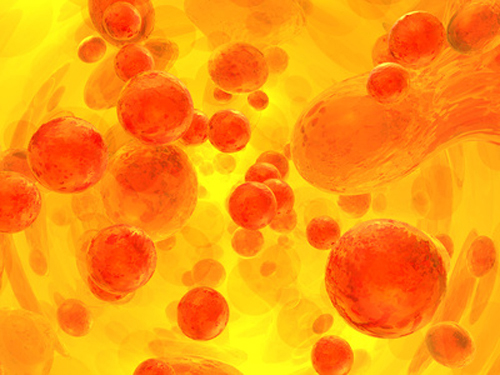Scientists have discovered a new mechanism by which cancerous cells in acute myeloid leukemia (AML) regulate the protein IDH2 (isocitrate dehydrogenase2) known to be mutated in cancer, to increase the buildup of cancer cells in the blood. These new insights on IDH2-related mechanisms in AML will allow physicians to better understand how current IDH2-targeting medications work and will allow for the development of better treatment options for patients with AML.
The study is published in an article in the journal Molecular Cell, titled, “Lysine acetylation restricts mutant IDH2 activity to optimize transformation in AML cells.” Financial support for the study came from NIH grants and the University of Chicago medical scientist training program.
When white blood cells that normally fight infection acquire mutations that cause them to multiply excessively, AML results. It is the most common acute leukemia in adults. Treatments for AML include chemotherapy, radiation, and medications that specifically target the protein drivers of AML.
Mutations in IDH1 and IDH2 can drive the development of AML. Inhibitors that target mutant IDH2 and IDH1 have been approved by the FDA to treat AML that has relapsed or been resistant to other medications. For example, enasidenib, a small molecule that binds and inhibits the IDH2 mutant protein, increases the maturation of leukemia cells and reduces the number of leukemic cells in animal models.
Normal IDH proteins play a key role in the production of energy from the breakdown of molecules in food. Mutant forms of IDH proteins found in AML cells, take on an extra function of making a cancer-causing molecule called 2-HG (2-hydroxyglutarate). 2-HG keeps white blood cells in an immature multiplying mode, resulting in leukemia. However, at high concentrations 2-HG it becomes toxic, killing cancer cells.
Cancer cells regulate the production of 2-HG to keep dividing, preventing the build-up of higher concentrations of 2-HG that would kill them. How cancer cells accomplish this feat has been unknown until now and was the focus for a team of researchers including scientists from the University of Chicago, Emory University School of Medicine, Memorial Sloan Kettering Cancer Center, Beckman Research Institute of City of Hope, and Yale University School of Medicine.
Jing Chen, PhD, professor of medicine at the University of Chicago, and his collaborators discovered that AML cells are able to modify mutant IDH2 and regulate its activity, thus controlling the amount of 2-HG that it can produce. They found that cancer cells modify the mutant IDH2 enzyme through acetylation at a lysine residue that prevents the enzyme from coupling to form a dimer. They also determined the threshold of 2-HG concentration that allows it to switch from a cancer-causing to a cancer-killing agent.
The team identified a master regulator tyrosine kinase enzyme called FLT3, that initiates a series of biochemical phosphorylation events that results in the acetylation of IDH2, a modification that blocks its activity and decreases the amount of 2-HG in the cell, keeping the AML cancer cells from dying.
“Our studies demonstrate that different intracellular concentrations of 2-HG correlate with critical cellular functions that can mean life or death for cancer cells,” said Chen. “We also elucidated the distinct regulatory mechanisms for the protein variants, mutant IDH1, and mutant IDH2, in AML. This thorough understanding of AML driven by IDH mutant proteins allows us to better understand the mechanisms of action of AML-targeted therapies.”


